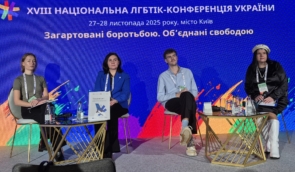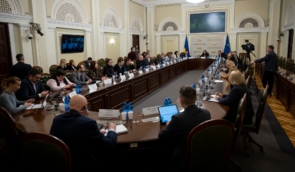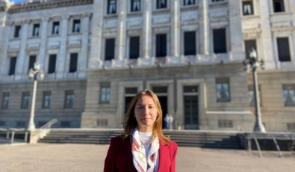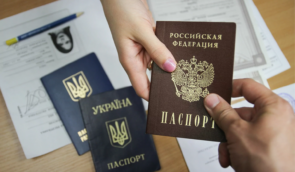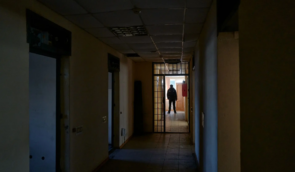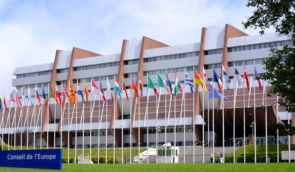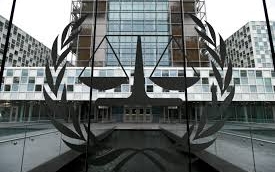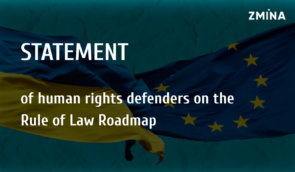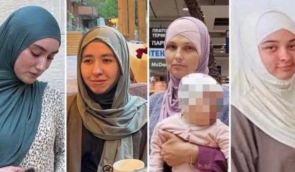Russia created “women’s cells” in Kherson detention center where at least 30 women were held – human rights defenders
Temporary detention center (hereinafter referred to as the TDC) No. 1 of the Main Department of the National Police in Kherson Region, located at 3 Teploenerhetykiv Street in Kherson city was one of the places in de-occupied Kherson region where the Russians held and tortured civilians. The so-called women’s cells were set up in this detention center. Human Rights Centre ZMINA researchers managed to establish that at least 30 women were held at the TDC at different times.
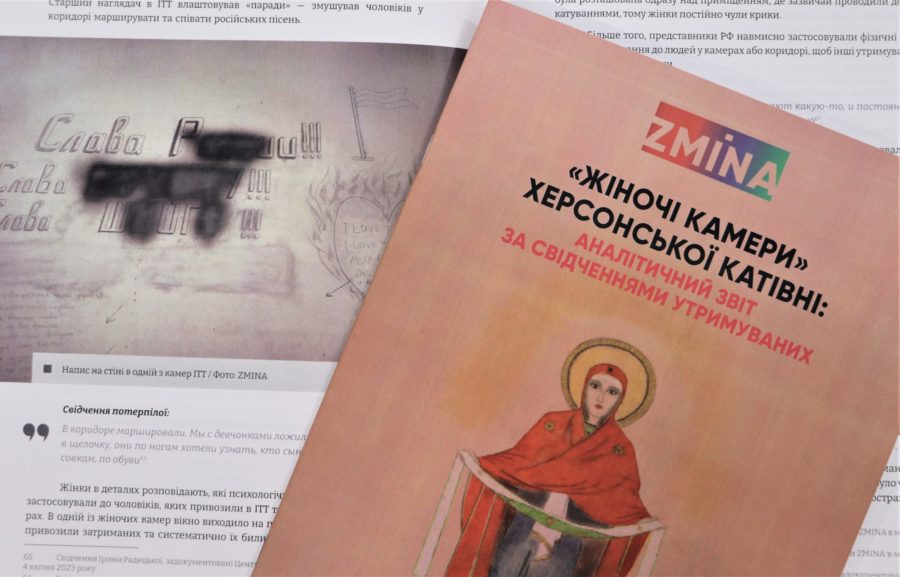
ZMINA legal analyst Onysiia Syniuk announced this during a press conference on July 13. Human rights defenders presented the report on the illegal confinement of Ukrainian women by the occupiers in the Kherson detention center. The report is based on the testimonies of victims and witnesses.
The women were detained during the summer – mainly in July-August 2022 – and were held until the end of October when Russian troops began to retreat from the right bank of Kherson region.
“The women were held in the detention center from one hour to almost three months. The age of these women, according to official data, is from 32 to 58 years. According to the testimonies of the detainees themselves, the youngest of the women who stayed in the TDC the longest was 21 years old. At the same time, according to the testimonies, there were also minors among the detainees held in the TDC for a short time,” Syniuk said.
Confined women were suspected, in particular, of partisan activities and assistance to the Armed Forces of Ukraine. Thus, in particular, female employees of the law enforcement agencies of Ukraine were detained deliberately. People whom the Russian Federation suspected of having contact or family ties with representatives of law enforcement agencies of Ukraine, the Armed Forces of Ukraine, or the resistance movement in the temporarily occupied territories of Kherson region were also detained.
A former volunteer of the Right Sector movement who helped in a military hospital, an employee of the Kherson regional municipal emergency and rescue service, an employee of the personnel department of the paramilitary guard, a housewife, a cadet of the Ivan Kozhedub Kharkiv University of Air Force, an employee of the patrol police department, as well as the deputy director of the gymnasium were among the women held in the TDC.
 Onysiia Syniuk
Onysiia SyniukAnother category of detainees is those who were used as hostages to detain family members and relatives, as well as acquaintances.
It is known about the case when a woman, who turned away and did not greet the Russian servicemen who entered a bus at the checkpoint, was detained for several days.
The representatives of the Russian Federation, who carried out the detention, in several cases presented themselves as “police of the Ministry of Internal Affairs of Russia” or “military criminal police”. At the same time, they mostly did not provide service cards or other documents, and also hid their faces, wearing balaclavas.
During the detention, representatives of the Russian Federation put psychological pressure on people and even used physical force — one woman was brought to the TDC already with a hemorrhage under her eye and hematomas on her head.
The conditions in the detention center where the women were held were improper: the cells were designed for two or three people, while five to nine people were held in them at the same time. Also, for the first three weeks, detainees did not have the opportunity to fully wash themselves at all. Food was also poor, meals were often given spoiled and there was not enough for everyone.
The Russians also tortured Ukrainian women, in particular those who had professional ties with the law enforcement agencies of Ukraine, the Armed Forces of Ukraine, or whom the representatives of the Russian Federation suspected of having ties with the Ukrainian resistance movement. Most often, women were tortured with electric shocks, water, and they were also beaten. There is also a case of sexualized torture – a victim was beaten with electric shock on her chest. There were also threats of violence.
Olha Honchevska, a former employee of the Patrol Police Department in Kherson Region, was illegally held in the TDC for more than 1.5 months. She was detained together with her common-law husband, also a former police officer, on a tip from a former colleague. Olha and other women in the detention center were fed once a day, they washed themselves mostly with water from bottles.
 Olha Honchevska (on the screen)
Olha Honchevska (on the screen)Olha was subjected to psychological pressure: she was threatened that her head would be shaved and her parents taken away; she was held near the rooms where others were tortured. Later, during the interrogation, the woman was tortured with electric shocks to get information about “supervisors from the Security Service of Ukraine”. Then, holding her by force, the three men put a cloth over the woman’s face and began to pour water on her, which made her unable to breathe.
Another victim, Natalia Sosmiy, a cadet of the Ivan Kozhedub Kharkiv University of Air Force, was detained in her yard by 30 armed Russians wearing balaclavas and illegally held in an isolation cell for three weeks. The woman was accused of “having a double life and cooperating with the Security Service of Ukraine.” As soon as the woman was brought to the TDC, approximately 15 occupiers surrounded her in the hall and began to force her to undress for an “examination” – they lifted her T-shirt and pulled down her pants, and touched her body. They also said that they would rape her and her minor daughter. Subsequently, the woman was beaten during interrogations.
“Representatives of the Russian Federation inflicted suffering on detained women to obtain information, confessions, or to intimidate to suppress resistance in the occupied territories. In addition, the Russians used threats of sexual violence and harassment for psychological pressure and assertion of their dominant position. Such threats of sexual violence are part of the culture of the Russian military and are not punished by commanders,” Syniuk says.
Natalia Okhotnikova, ZMINA human rights adviser, states that there are reasons to believe that representatives of the Russian Federation are committing not only war crimes but also crimes against humanity. After all, the Russians held Ukrainian women in inadequate conditions, and crimes, in particular torture, were committed systematically and on a large scale.
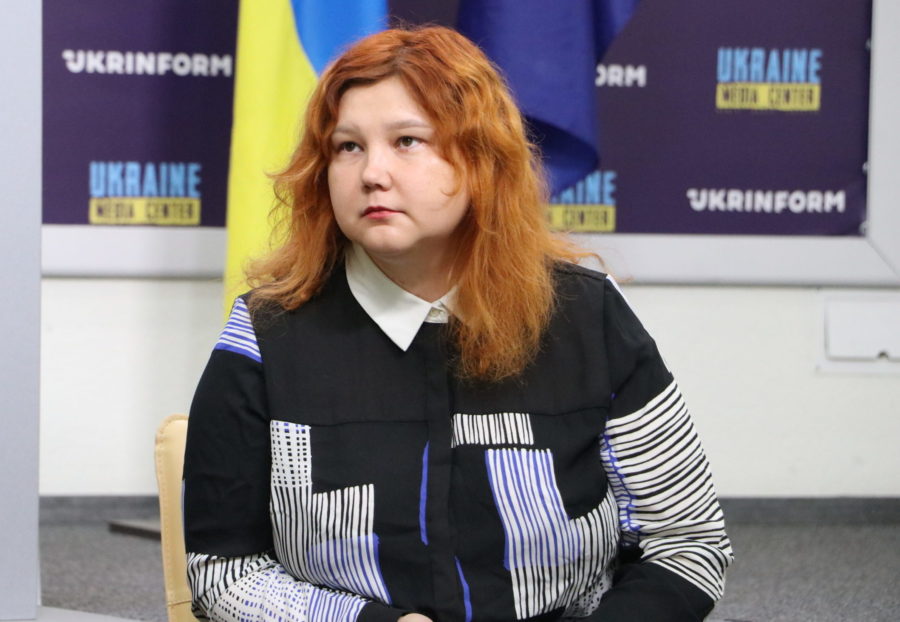 Natalia Okhotnikova
Natalia Okhotnikova“We submit the data of all the women who gave their consent to the Security Service of Ukraine and the Prosecutor General’s Office and we also plan to submit them to the International Criminal Court to maximize the proper investigation into all the incidents mentioned in the report,” Okhotnikova added.
Read the report in English and Ukrainian here.
Watch video from the press conference at the link.
If you have found a spelling error, please, notify us by selecting that text and pressing Ctrl+Enter.

